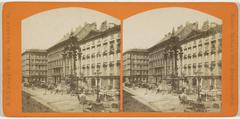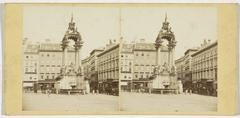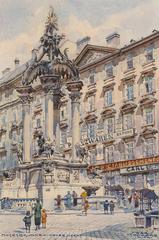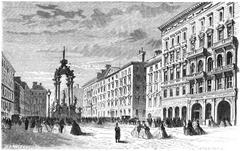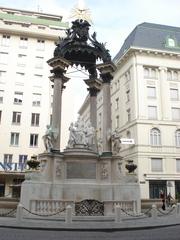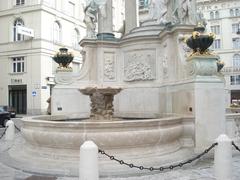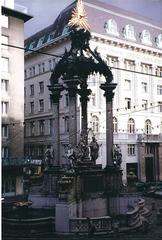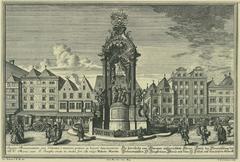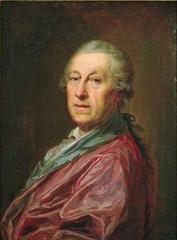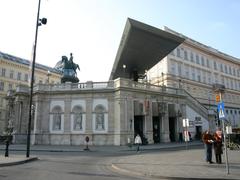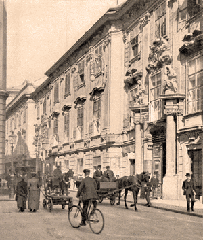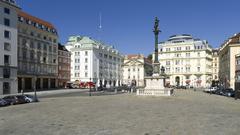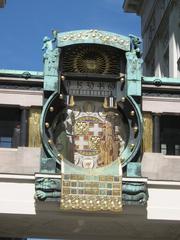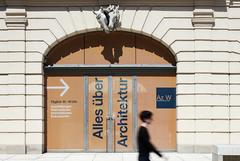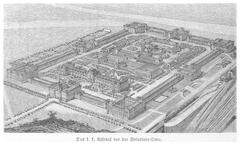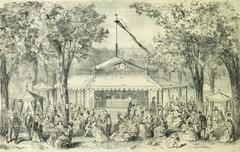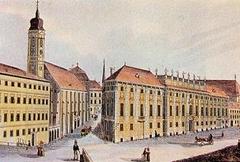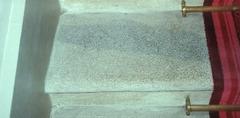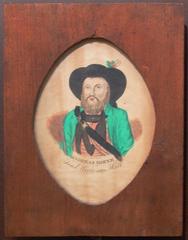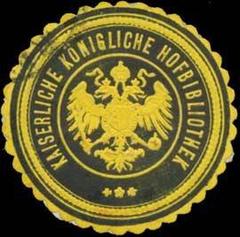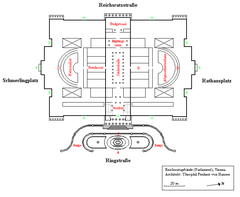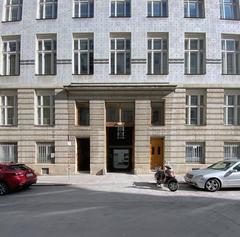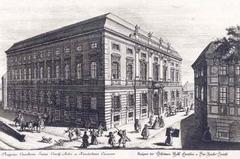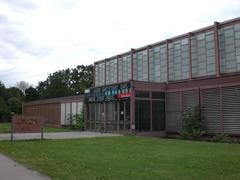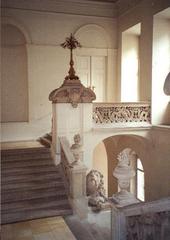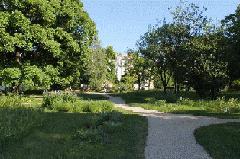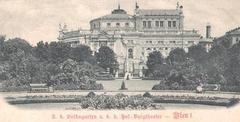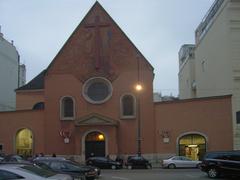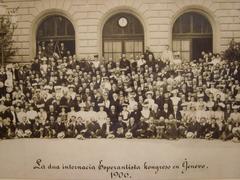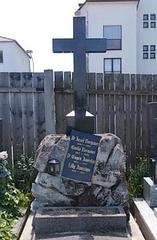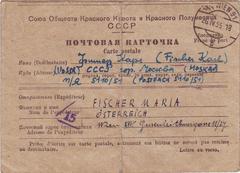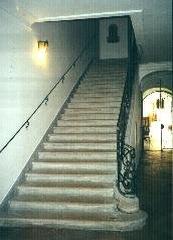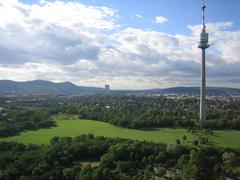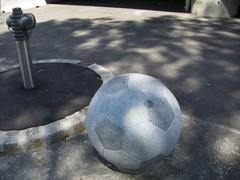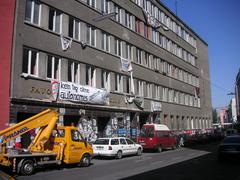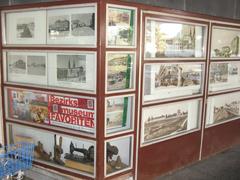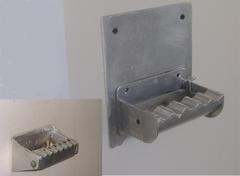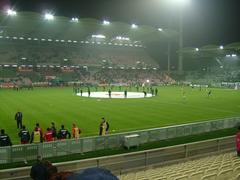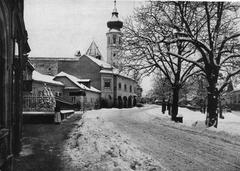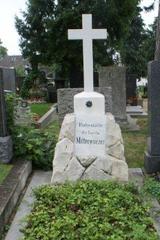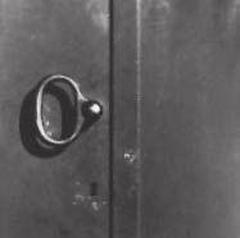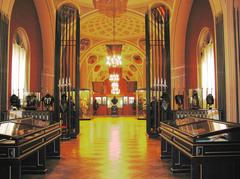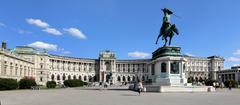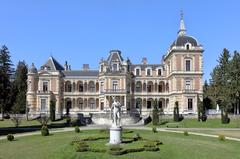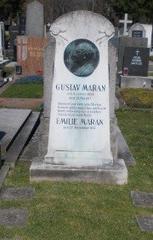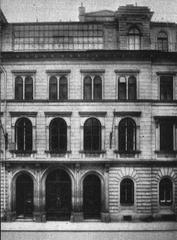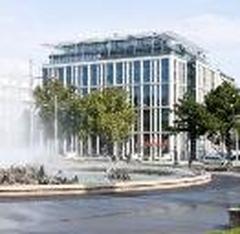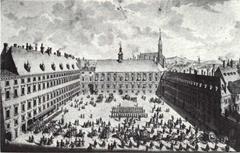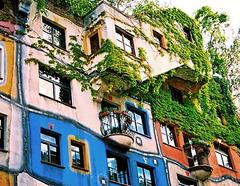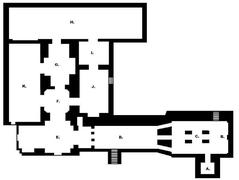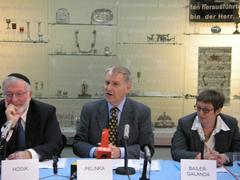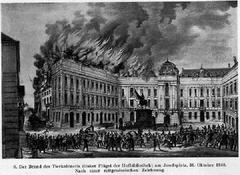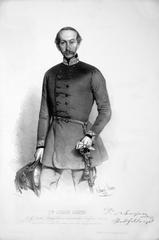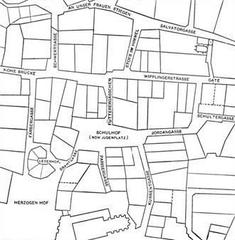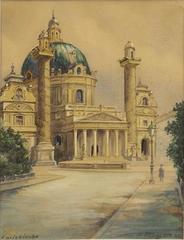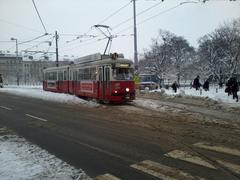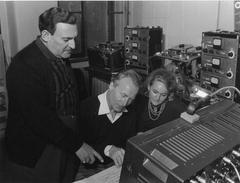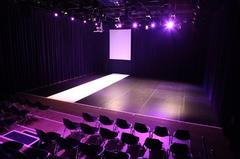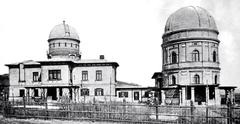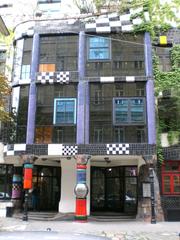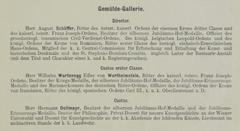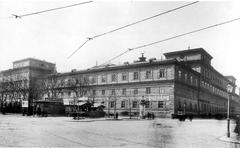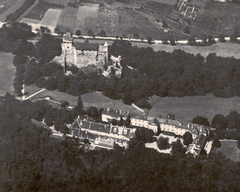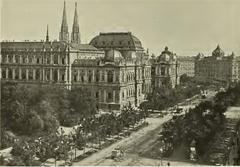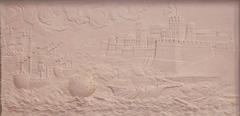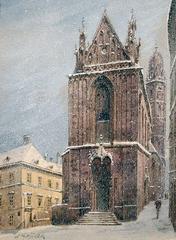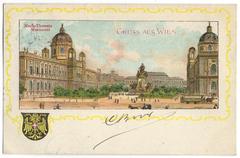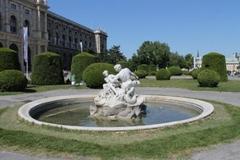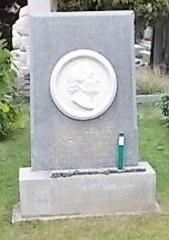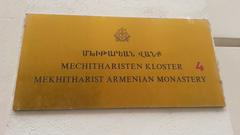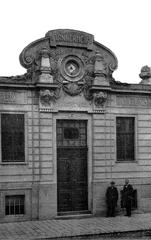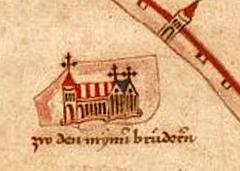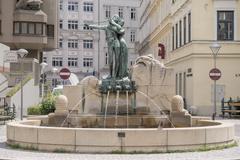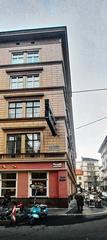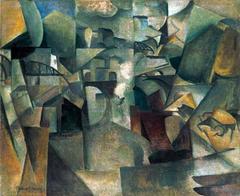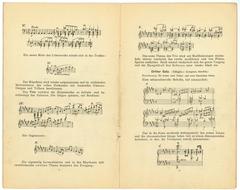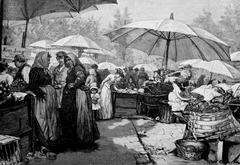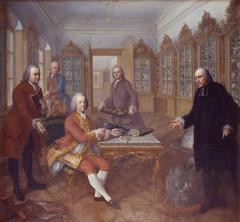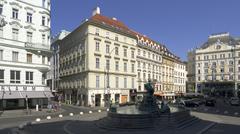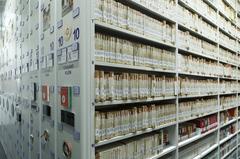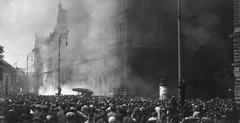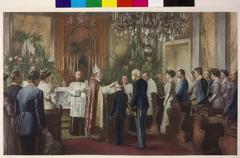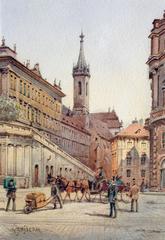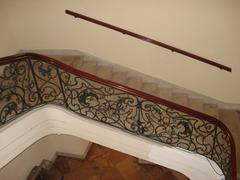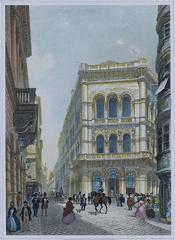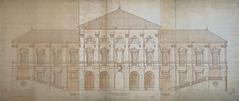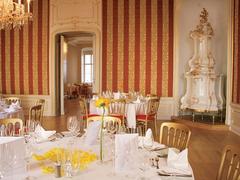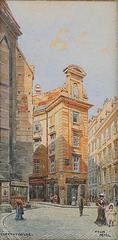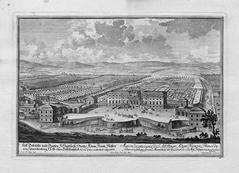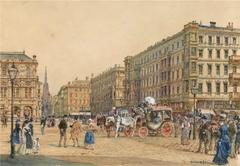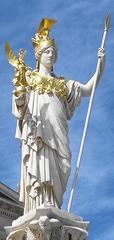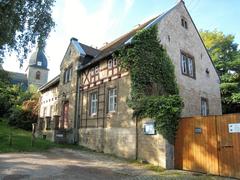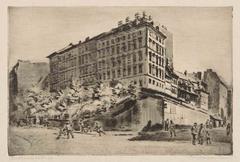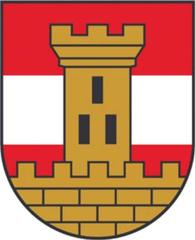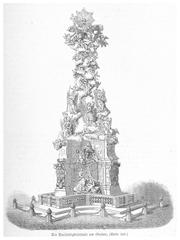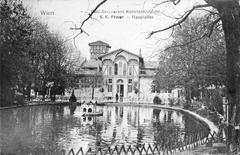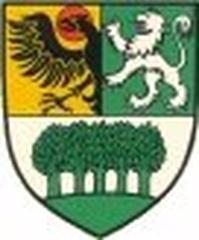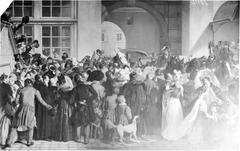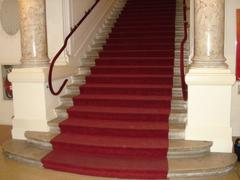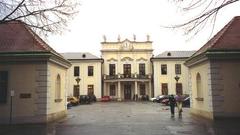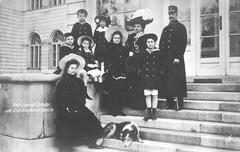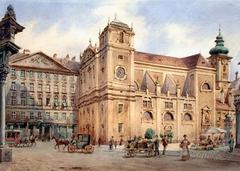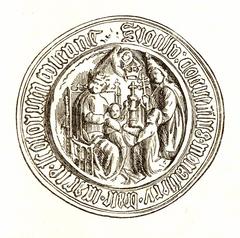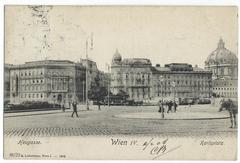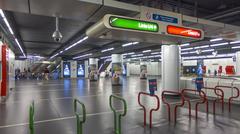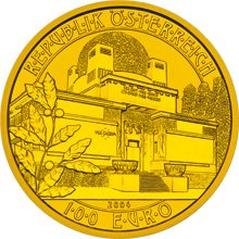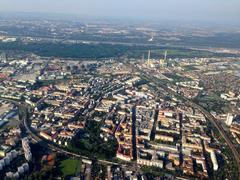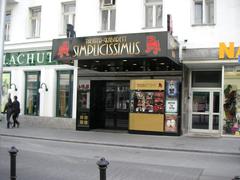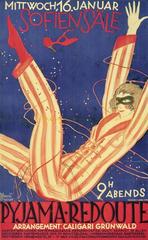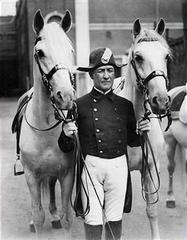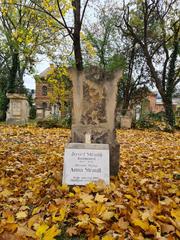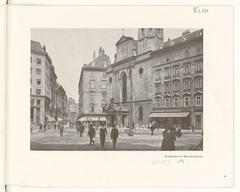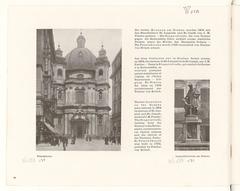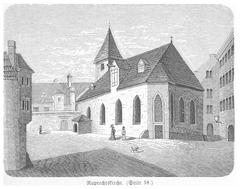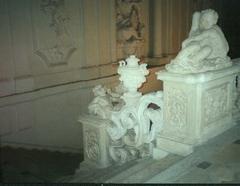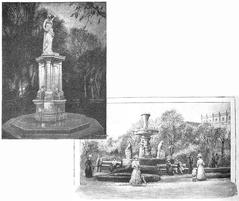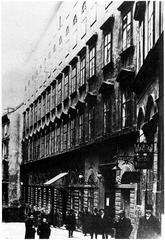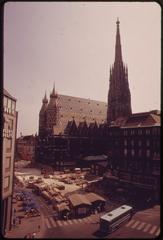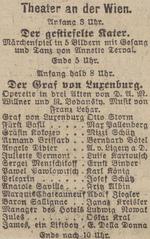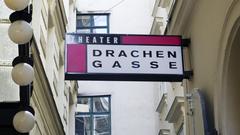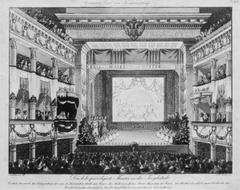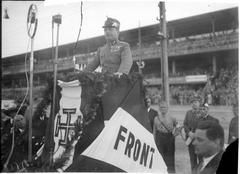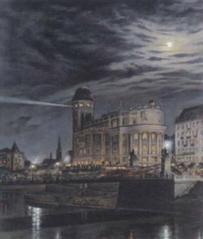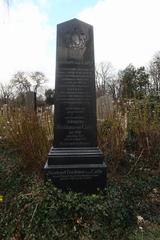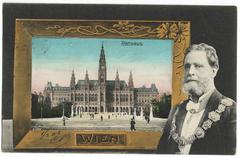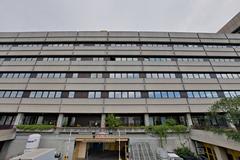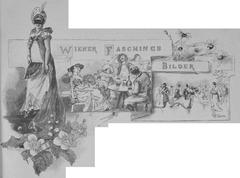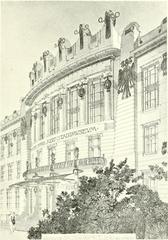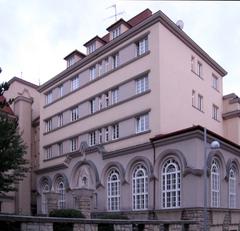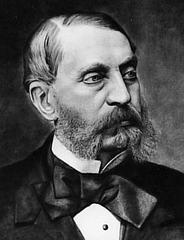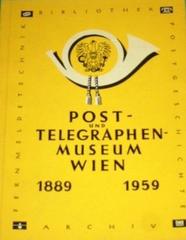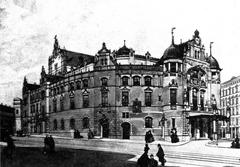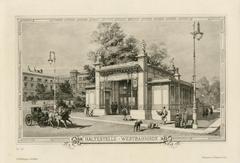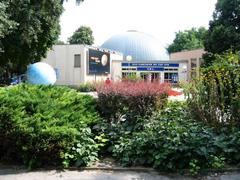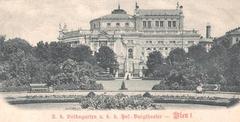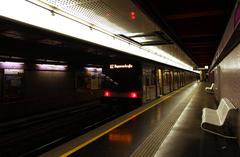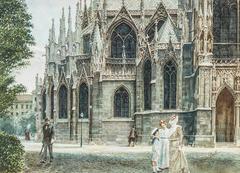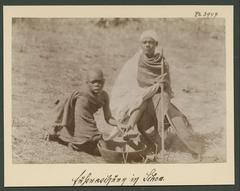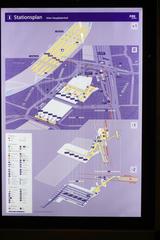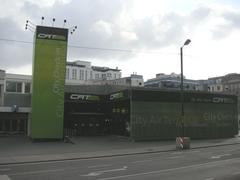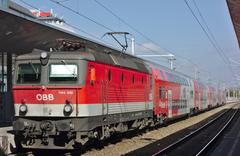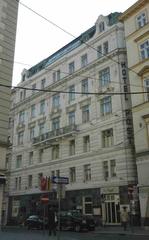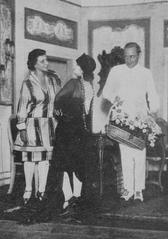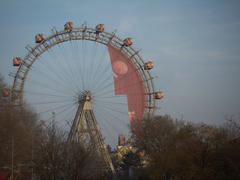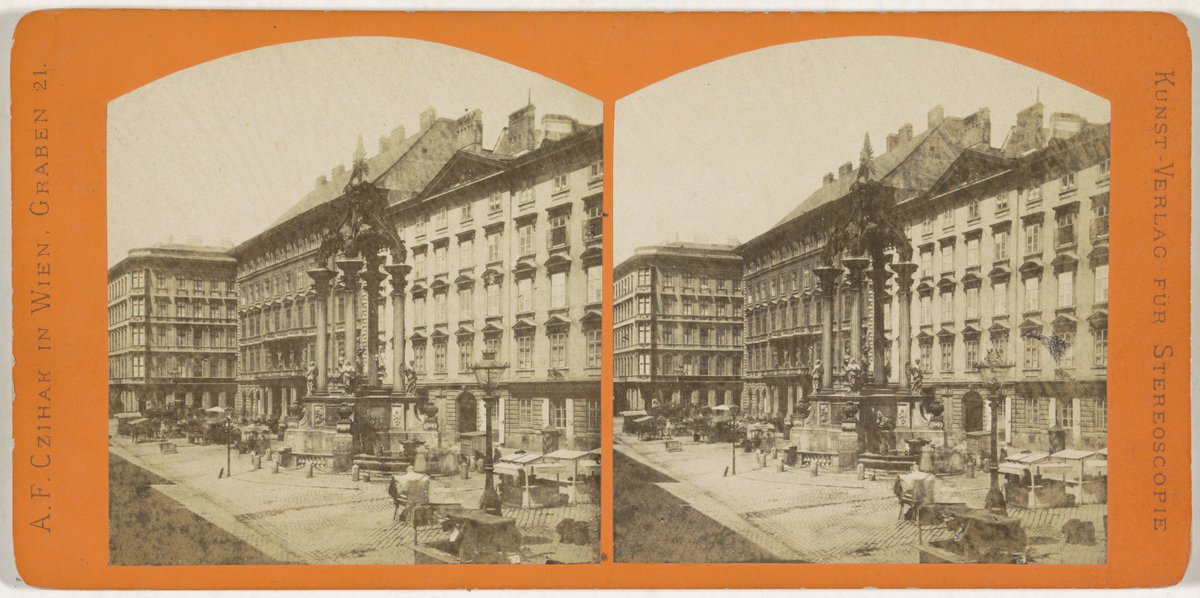
Comprehensive Guide to Visiting Vermählungsbrunnen, Vienna, Austria
Date: 01/08/2024
Introduction
The Vermählungsbrunnen, also known as the Wedding Fountain or Josefsbrunnen, stands as a testament to Vienna’s rich historical and cultural heritage. Located in Hoher Markt, one of the oldest squares in Vienna, this Baroque monument has a fascinating backstory and exceptional artistic significance. Originally commissioned by Emperor Leopold I in 1702 as a votive offering for his son’s safe return from battle, the fountain underwent several transformations before becoming the iconic structure it is today (tourmycountry.com). The Vermählungsbrunnen not only symbolizes the marriage of the Virgin Mary and Saint Joseph—a rare motif in religious art—but also reflects the artistic excellence of the Baroque period through its intricate sculptures and detailed carvings (vienna-insight.at). This comprehensive guide aims to provide you with all the information you need to make the most of your visit, including historical insights, visiting tips, and nearby attractions.
Table of Contents
- Introduction
- Origins and Initial Construction
- Transformation into a Fountain
- Artistic and Religious Significance
- Damage and Restoration
- Historical Context and Location
- Nearby Attractions
- Visitor Information
- Cultural Impact
- Modern-Day Significance
- FAQ
- Conclusion
Origins and Initial Construction
The origins of the Vermählungsbrunnen date back to a vow made by Emperor Leopold I in 1702. Concerned about the safe return of his son, Joseph, from the siege of the Fortress of Landau during the War of the Spanish Succession, Leopold I promised to construct a memorial if his son returned unharmed (tourmycountry.com).
Joseph did return safely, but the Emperor did not immediately fulfill his promise. It was only after Leopold I’s death in 1705 that his sons took up the task. Under the reign of Joseph I, a wooden monument was designed by the court architect Johann Bernhard Fischer von Erlach. The initial version of the Vermählungsbrunnen was erected on March 19, 1706, and was dedicated to the parents of Christ, the Virgin Mary, and her husband, Saint Joseph (vienna-insight.at).
Transformation into a Fountain
The original wooden structure did not last long due to its susceptibility to the elements. By 1732, the wooden monument had deteriorated significantly, prompting the need for a more durable replacement. Emperor Charles VI commissioned a new version of the monument, this time constructed from stone and bronze. The new design was again based on the work of Johann Bernhard Fischer von Erlach, but it was his son, Joseph Emanuel Fischer von Erlach, who oversaw the construction from 1729 to 1732 (aviewoncities.com).
The new Vermählungsbrunnen was not just a votive column but an actual fountain. The basins were crafted from marble sourced from Adnet in Salzburg, a traditional supplier of marble for Austrian monuments. The fountain featured four basins surrounding the statues of Mary, Joseph, and the High Priest, all under a bronze baldachin supported by four large Corinthian columns (tourmycountry.com).
Artistic and Religious Significance
The Vermählungsbrunnen is notable for its depiction of the marriage between Mary and Joseph, a relatively rare motif in religious art. This scene is represented by statues created by the Venetian artist Antonio Corradini. The fountain’s design includes four angels at each corner, holding the columns that support the brass baldachin. The entire structure is a blend of Baroque artistry and religious symbolism, making it one of the most important Viennese fountain monuments of the Baroque period (wien.info).
Damage and Restoration
The Vermählungsbrunnen has endured significant damage over the centuries, particularly during World War II. The fountain was severely damaged by bombs, necessitating extensive restoration work between 1950 and 1955. During this restoration, the head of the statue of Mary had to be replaced with a copy. Further refurbishment efforts continued until 2008, ensuring that the fountain remains a prominent and well-preserved historical monument (tourmycountry.com).
Historical Context and Location
The Hoher Markt square, where the Vermählungsbrunnen is located, is one of the oldest squares in Vienna. This area has a rich history that predates the Habsburgs, with Roman officers having lived on this spot. Emperor Marcus Aurelius is also believed to have stayed here. The square has undergone significant changes over the centuries, particularly due to the destruction caused by World War II. Despite these changes, the Vermählungsbrunnen has remained a constant presence, akin to an ancient oak among newer structures (visitingvienna.com).
Nearby Attractions
The Vermählungsbrunnen is situated in a historically rich area with numerous nearby attractions. These include the Stadttempel (main synagogue), Stephansdom (St. Stephen’s Cathedral), Peterskirche (St. Peter’s Church), the old City Hall of Vienna, and Judenplatz Square. The Römermuseum (Roman Museum) is also located nearby, offering insights into the Roman history of the area (tourmycountry.com).
Visitor Information
- Visiting Hours: The Vermählungsbrunnen is accessible to the public 24/7, although it is best viewed during daylight hours for optimal photography.
- Tickets: There is no admission fee to view the fountain as it is located in a public square.
- Travel Tips: The fountain is easily accessible via public transportation. The nearest subway station is Stephansplatz, which is a short walk away.
- Accessibility: The area around the fountain is wheelchair accessible.
- Special Events: The square occasionally hosts cultural events and festivals, which can offer a unique backdrop for the fountain.
- Guided Tours: Various guided tours of Vienna include a stop at the Vermählungsbrunnen, offering deeper insights into its history and significance.
- Photographic Spots: The best angles for photography are from the front and sides of the fountain, capturing the intricate details and the surrounding architecture.
Cultural Impact
The Vermählungsbrunnen has not only been a significant religious and historical monument but also a cultural icon in Vienna. Its depiction of the marriage of Mary and Joseph has been a popular motif in religious art, inspiring works by renowned artists such as Raphael and El Greco. The fountain’s enduring presence in the ever-changing landscape of Hoher Markt square serves as a testament to Vienna’s rich cultural and historical heritage (visitingvienna.com).
Modern-Day Significance
Today, the Vermählungsbrunnen continues to be a focal point in Vienna’s city center. It attracts both tourists and locals, offering a serene spot amidst the bustling city. The fountain’s historical and artistic significance, combined with its central location, makes it a must-visit landmark for anyone exploring Vienna. The recent refurbishments have ensured that the Vermählungsbrunnen remains in excellent condition, allowing visitors to appreciate its beauty and historical importance fully (tourmycountry.com).
FAQ
Q: What are the visiting hours for the Vermählungsbrunnen? A: The fountain is accessible 24/7, but it is best viewed during daylight hours.
Q: Is there an admission fee to visit the Vermählungsbrunnen? A: No, there is no admission fee as it is located in a public square.
Q: How can I get to the Vermählungsbrunnen? A: The fountain is easily accessible via public transportation. The nearest subway station is Stephansplatz.
Q: Are there guided tours available? A: Yes, various guided tours of Vienna include a stop at the Vermählungsbrunnen.
Q: Is the area around the fountain wheelchair accessible? A: Yes, the area is wheelchair accessible.
Conclusion
The Vermählungsbrunnen is a monument steeped in history, from its origins as a votive column promised by Emperor Leopold I to its transformation into a Baroque fountain under Charles VI. Its artistic and religious significance, coupled with its resilience through centuries of change and damage, make it a cornerstone of Vienna’s historical and cultural landscape. Whether you’re a history buff, an art lover, or simply a curious traveler, the Vermählungsbrunnen is a must-visit landmark in Vienna. Don’t forget to check out other related posts and follow us on social media for more updates on Vienna’s historical sites.
